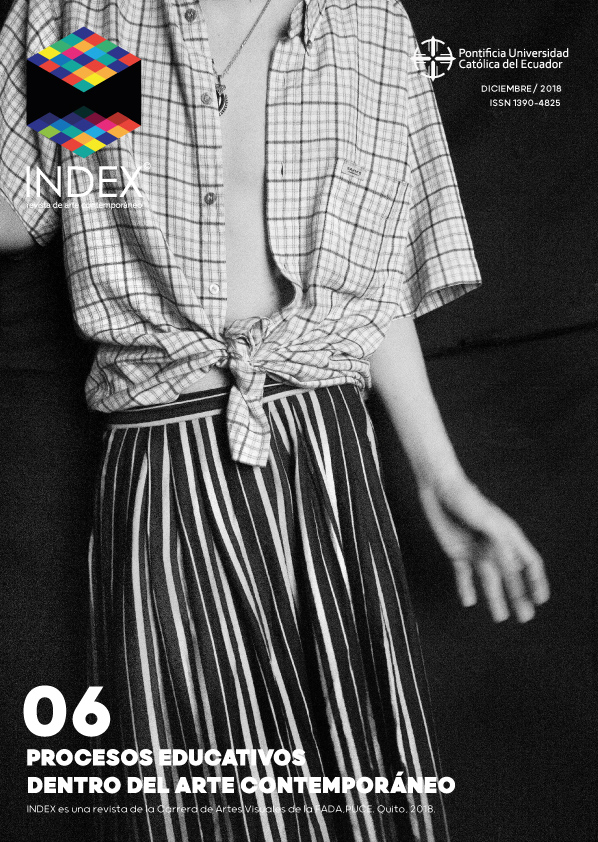Animals: unwitting performers in interactive art unwitting performers in interactive art
Main Article Content
Abstract
Some researchers have categorized the roles of different characters within the world of interactive performance (Reeves, 2008; Sheridan et.al., 2007). Nevertheless, the relationships that emerge from the presence of animals’ performers (Cull, 2015) in the interactive artwork are not clear enough. This paper will study the presence of animals in the interactive performance and their effect on the audience. Hence, three approaches have been identified: (Benford, et.al., 2013) (i) a literature review of the roles in the interactive performance; (ii) the examination of the artwork Snail’s Place, which includes a group of snails as the core of the undetermined in the computational system; (iii) as well as a human centered study about the animal-computer-audience relationship. Finally, unwilling performers that can transform artwork and audience, are identified and described (Orozco, 2015).
Downloads
Article Details
Index, revista de arte contemporáneo maneja sus derechos bajo licencia Creative Commons Reconocimiento-NoComercial 4.0. En ese sentido los envíos quedan sujetos a la decisión del autor.
References
Benford, S., Crabtree, A., Flintham, M., Greenhalgh, C., Koleva, B., Adams, M., Tandavanitj, N., Row Farr, J., Giannachi, G., & Lindt, I. (2011). Creating the Spectacle: Designing Interactional Trajectories through Spectator Interfaces. ACM Transactions on Computer-Human Interaction, 18(3), 128. doi:10.1145/1993060.1993061
Benford, S., Greenhalgh, C., Crabtree, A., Flintham, M., Walker, B., Marshall, J., Koleva, B., Egglestone S. R., Giannachi, G., Adams, M., Tandavanitj, N. & Row Farr, J., (2013). PerformanceLed Research in the Wild. ACM Transactions on Computer-Human Interaction, 20(3), 122. doi:10.1145/2491500.2491502
Costello, B., Muller, L., Amitani, S. & Edmonds, E. (2005). Understanding the Experience of Interactive Art: Lamascope in Beta_space, Proceedings of the second Australian conference on Interactive entertainment, 49-56.
Cull, L. (2015) From Homo Performans to Interspecies Collaboration, Expanding the Concept of Performance to Include Animals. In L. Orozco & J. Parker-Starbuck (Eds.), Performing Animality, Animals in Performance Practices (pp. 19-36) Hampshire: Palgrave Macmillan. doi:10.1057/9781137373137.0007
Dixon, S. (2007). Digital Performance, A History of New Media in Theater, Dance, Performance Art, and Installation. Cambridge: MIT Press. doi:10.1162/leon.2008.41.3.294
Gaver, W., Beaver, J. & Benford, S. (2004). Ambiguity as a Resource for Design, CHI"™03 Proceedings of the SIGCHI Conference on Human Factors in Computing Systems, 5(1), 233-240. doi:10.1145/642611.642653
Goldberg, K. (n.d.) In Berkeley, University of California. Recuperado Marzo 22, 2018, de http://goldberg.berkeley.edu/garden/Ars/
GrosseHering, B.,Mason, J., Aliankseyeu, D., Bakker. C. & Desmet, P. (2013). Slow Design for Meaningful Interactions, CHI 2013: Changing Perspectives, 34313440. doi:10.1145/2470654.2466472
Heitlinger, S. & BryanKinns, N. (2016). Understanding performative behaviour within content rich Digital Live Art, Digital Creativity, 24(2), 111-118. doi:10.1080/14626268.2013.808962
Jochum, E. & Goldberg, K. (2016). Cultivating the Uncanny: The Telegarden and Other Oddities. In D. Herath, C. Kroos & Stelarc (Eds.), Robots and Art, Exploring an Unlikely Symbiosis, (pp. 149-175) Singapore: Springer. doi:10.1007/978-981-10-0321-9_8
Koleva, B. & Schnädelbach, H. (2016).Traversable interfaces between real and virtual worlds, Proceedings of the SIGCHI conference on Human Factors in Computing Systems, 233-240. doi:10.1145/332040.332437
Lieser W. (2009). Digital Art, Konigswinter: H.F. Ullmann.
Marsh T. (2015). Designing for Positive and Serious Experience: Devices for Creativity, Engagement, Reflection and Learning, Joint International Conference on Serious Games, 3-10. doi.org/10.1007/978-3-319-19126-3_1
Orozco, L (2015). There and not There, Looking Animals in Contemporary Theatre. In L. Orozco & J. Parker-Starbuck (Eds.), Performing Animality, Animals in Performance Practices (pp. 189-203) Hampshire: Palgrave Macmillan. doi:10.1057/9781137373137_11
Pearson, M. (2006). "˜In Comes I"™ Performance, Memory and Landscape. Exeter: University of Exeter Press.
Pearson, M. & Thomas, J. (1994). Theatre/Archaeology, TDR (1988) 38(4), 133-161. doi:10.2307/1146429
Purcell, M. (2002). Excavating Lefebvre: The right to the city and its urban politics of the inhabitant. GeoJournal 58(2), 99-108. doi:0.1023/B:GEJO.0000010829.62237.8f
Preece, J., Rogers, I., & Sharp, H. (2002). Interaction Design: Beyond Human-Computer Interaction. New York: John Wiley & Sons.
Reeves, S. (2008). Designing Interfaces in Public Settings, Understanding the Role of the Spectator in Human-Computer Interaction. London: Springer. doi:10.1007/978-0-85729-265-0
Sheridan, J., BryanKinns, N. & Bayliss, A. (2007). Encouraging Witting Participation and Performance in Digital Live Art, BCSHCI '07 Proceedings of the 21st British HCI Group Annual Conference on People and Computers: HCI...but not as we know it. (1), 13-23.
Vickyisley (2008, June 20) Real Snail Mail will officially launch at SIGGRAPH 2008. Recuperado de https://realsnailmail.wordpress.com/2008/06/

